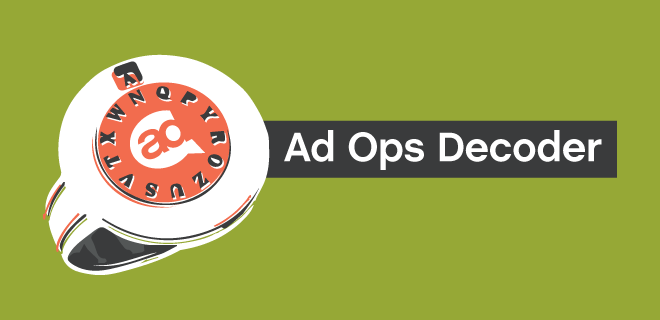
In the ad ops industry (aka “online ad operations,” “online advertising operations,” “ad operations,” “online ad ops,” and “ops” in the trade)—things keep changing all the time. There’s a new regulation here, some new tech to learn about there and then a bunch of rejiggering the pipes to keep apace. And with all of those changes comes a slew of new ad ops terms and acronyms to learn.
That’s why AdMonsters created the Decoder, a series that breaks down both the most basic and most complex aspects of ad ops from “What Is a Cookie?” to “What Is GDPR?” to “What Is Malware?” and loads more. Let’s take a look back at the top ad ops terms—that were Googled and searched on Admonsters.com, and most clicked from our weekly Eletter—to learn more about what everyone was thinking and talking about in 2018.
Top 7 Ad Ops Terms Of 2018 Explained
Here are the seven top ad ops terms that were covered in AdMonsters Decoder that the industry craved learning more about in 2018. These may not all be the latest terms, but they were definitely the ones a lot of ad ops folks were seeking to understand.
-
What Is EBDA?
-
What Is Yield Management?
-
What Is Programmatic Guaranteed?
-
What Is the Waterfall?
-
What Are Deterministic and Probabilistic IDs?
-
What Is Ads.cert?
-
What Are Better Ads Standards?
Now that you know these key ad ops terms, let’s gain a deeper understanding of what they mean as explained in the AdMonsters Decoder series.
1. What Is EBDA?
Exchange Bidding in Dynamic Allocation is, in a nutshell, Google’s answer to header bidding. It’s a server-side solution where exchanges and SSPs can bid on publisher inventory along with Google’s AdX in a unified auction. Now, to understand why that matters, we’re going to have to walk back a few steps. Read more.
2. What Is Yield Management?
The problem that yield management aims to solve for publishers: The total amount of inventory on a site is more or less consistent over time, but the demand for it fluctuates. Your goal is to sell out all your inventory all the time, at the highest prices possible. Yield management strategists have to figure out which buyers will have access to how much inventory, at which time, through which buying channels, at which CPMs. Read more.
3. What Is Programmatic Guaranteed?
There’s programmatic guaranteed, programmatic direct, preferred deals, and (although we hear about this one less often) automated guaranteed. None of these are the same thing, but some of these terms can get jumbled together in conversation—probably because they all sound like they would mean the same thing. And not to confuse things further, but programmatic guaranteed and real-time guaranteed are the same thing. The term you use will depend on what you and your ad tech partners prefer. But they refer to the same process. Read more.
4. What Is the Waterfall?
You may hear a lot these days (particularly on a header-cheerleading site like this one) about the ad-server waterfall being vanquished like some fairy-tale villain. Well, it’s not entirely gone, and similar to many foes in children’s stories, it wasn’t always such a bad thing—it was simply exploited. Read more.
5.What Are Deterministic and Probabilistic IDs?
Cookies are a foundational part of digital advertising, but their application is limited in a cross-device environment. Cookies are browser-specific, they aren’t supported in OTT, and they aren’t easily ported between mobile apps. Cookies, then, are just one type of identifier among several that go into targeting users across multiple screens. Those types of identifiers can be sorted into two groups, deterministic and probabilistic identifiers. Read more.
6. What Is Ads.cert?
With adoption of ads.txt ramping up among publishers, this is as good a time as any to look toward whatever is next in the battle against ad fraud. The good news (that is, it’s good unless you were hoping for a bit of a breather) is that the IAB Tech Lab has already been on it, and it’s part of OpenRTB 3.0. It’s called ads.cert, and in the simplest terms, it’s a digital signature on a piece of ad inventory, which can be verified against a shared key. Read more.
7. What Are Better Ads Standards?
Better Ads Standards are an initiative for promoting “acceptable” ad experiences for users, while discouraging disruptive ads. The overall goal, as stated, has been to keep the spread of ad-blocking tools at bay, by assuring the ads in the ecosystem are not so annoying they drive users to start using ad blockers. Read more.